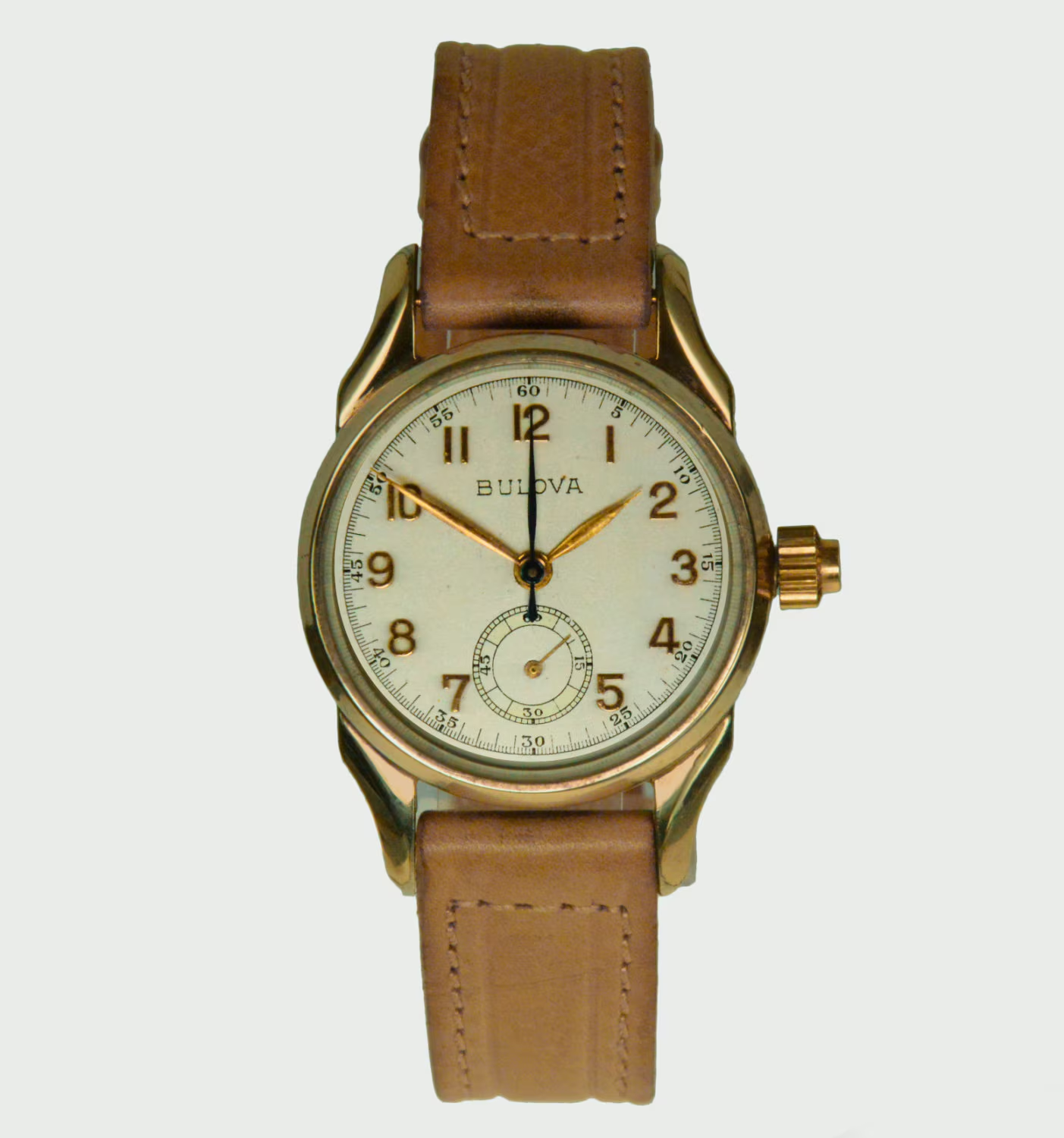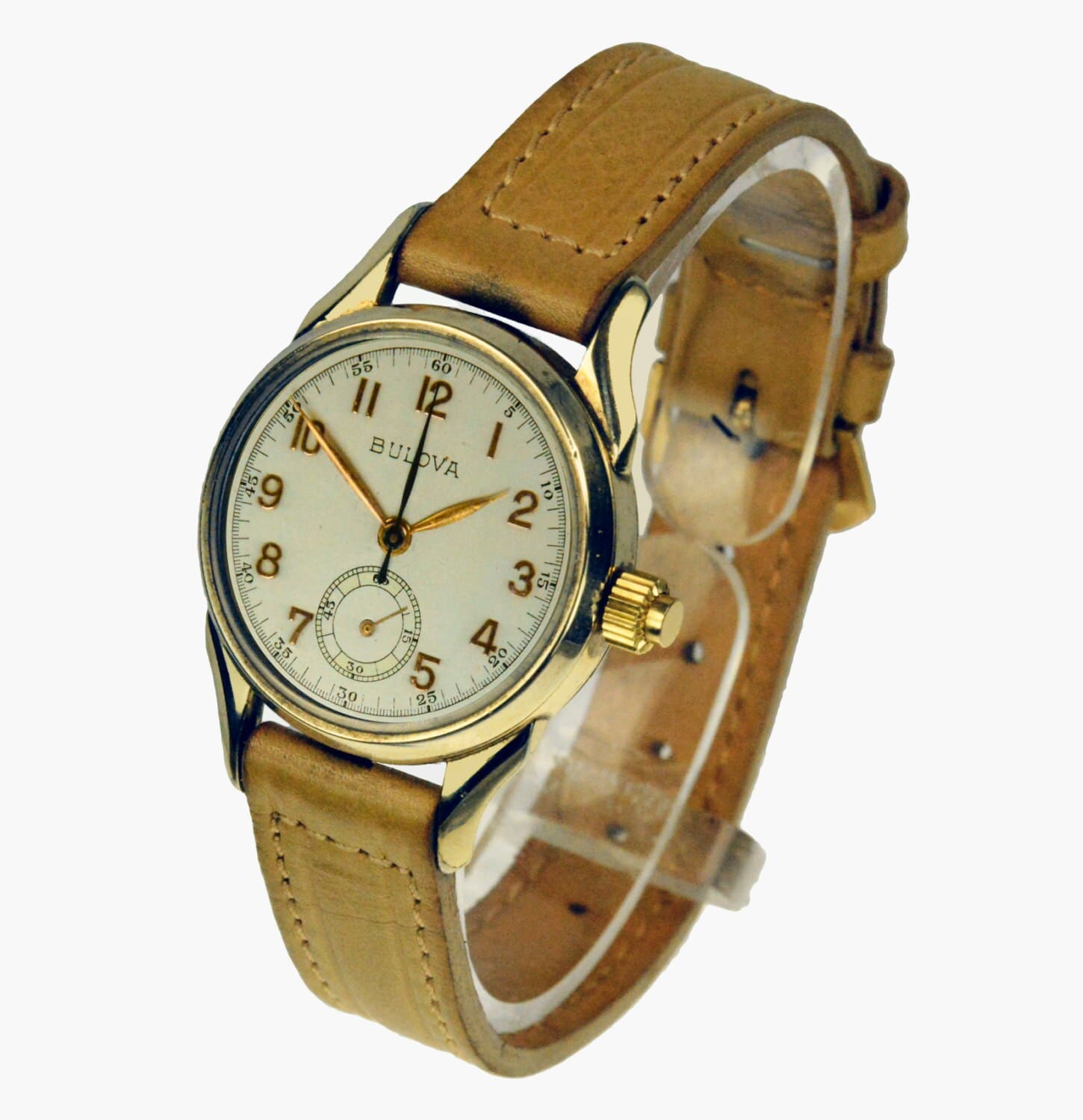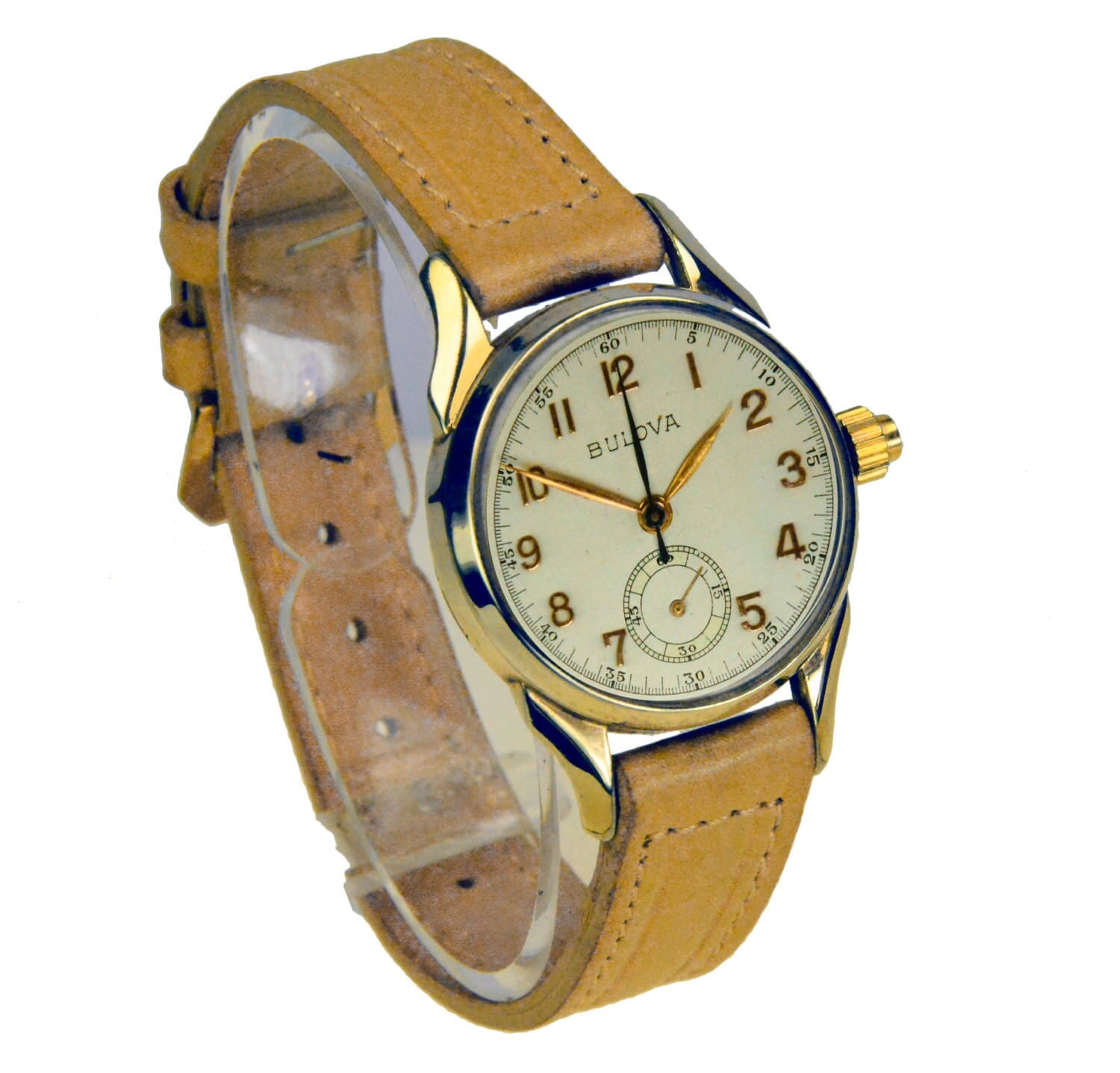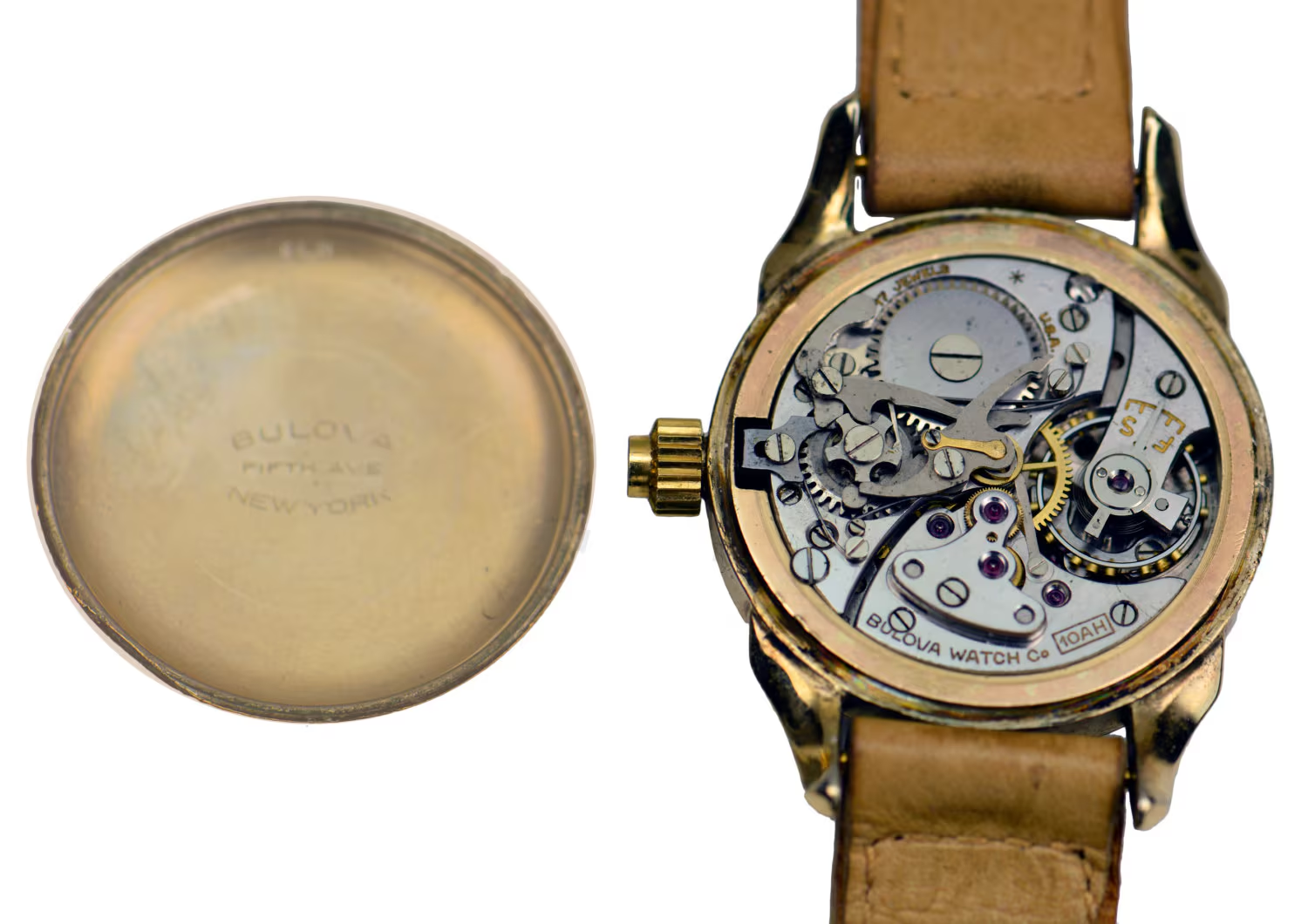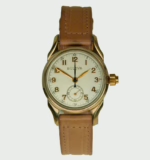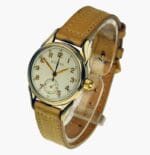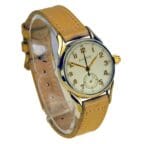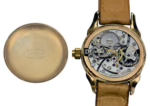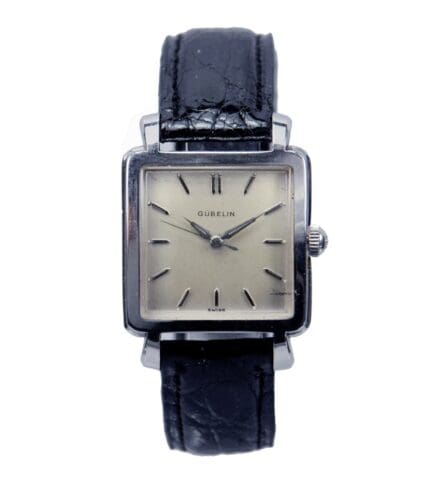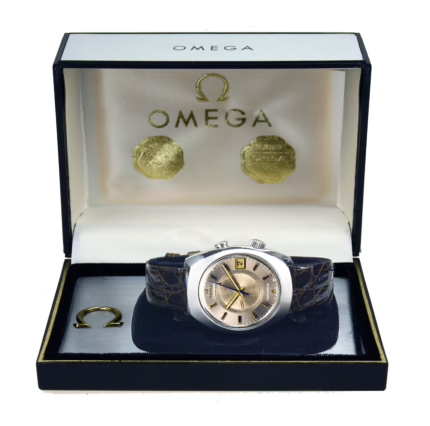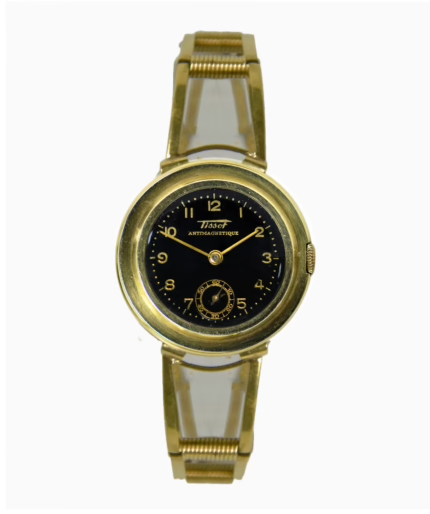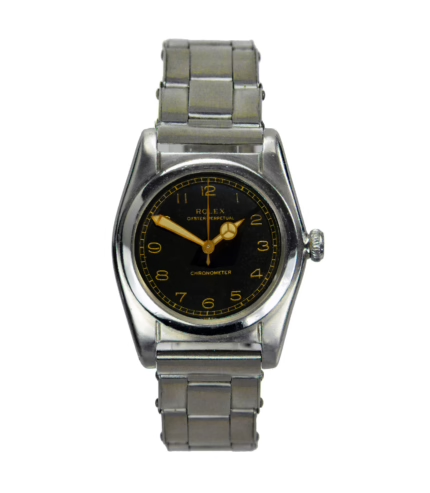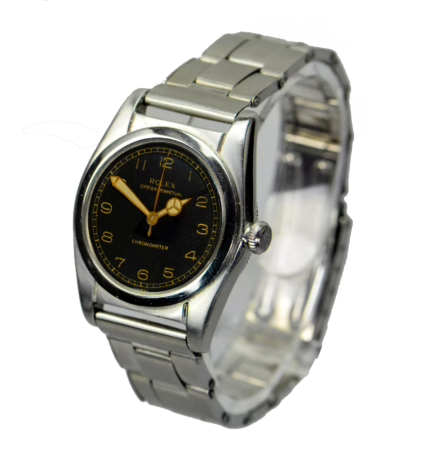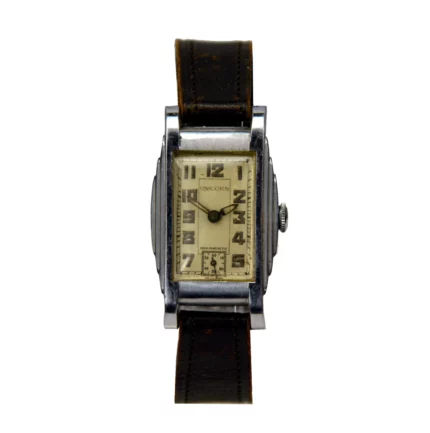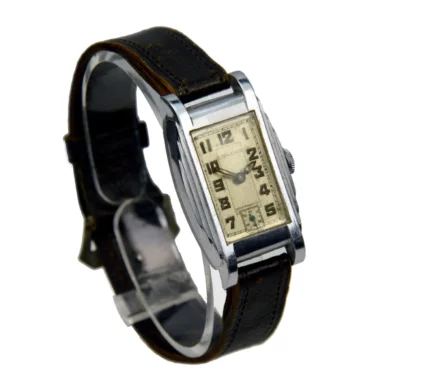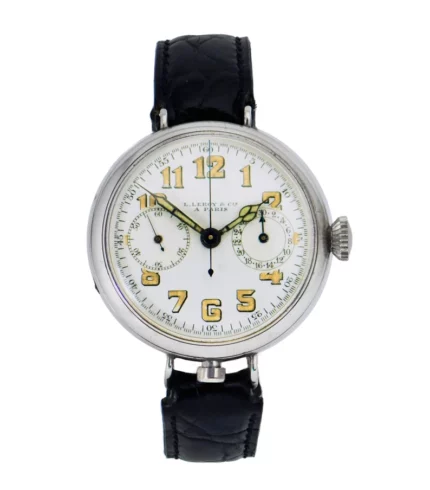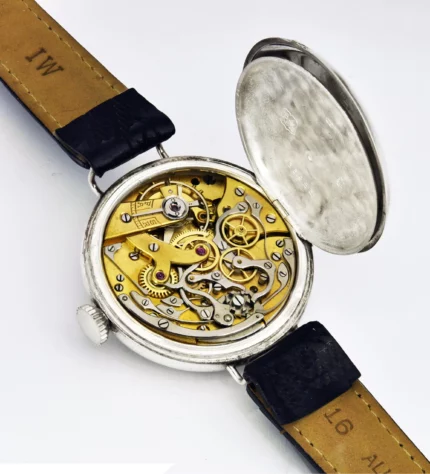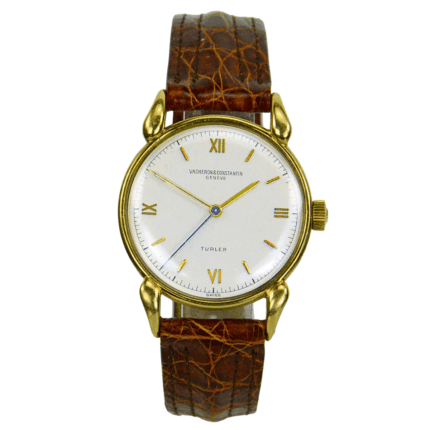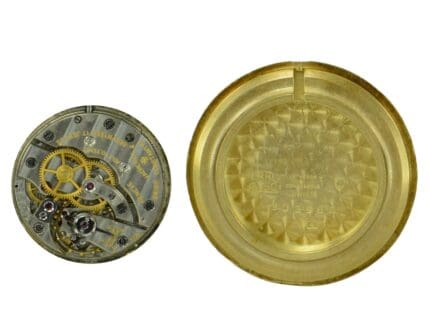Exceedingly Rare and Desirable ** Original Bulova World War II Epoch “One Button” Chronograph Wristwatch, USA 1942 **
This exceptionally rare 1942 Bulova “one-button” Chronograph is a wonderful and elegantly understated wristwatch, notably distinguished by the unusual push-button situated on the crown to control it’s chronograph functions.
At first glance One can easily jump to the erroneous conclusion that this watch shows only the time. However, even a cursory second glance reveals the simultaneous presence of both a sub-seconds register at the 6 o’clock position… and long sweep-seconds hand radiating from the watch’s center.
The latter, controlled by the watch’s chronograph gears, sweeps around a sixty-second register on the dial. It includes a start/stop/reset function all engaged by pressing the push-button which protrudes from the watch’s winding-crown.
This is one of the smallest mechanical production chronographs ever made, as well as one of the rarest of all Bulovas wristwatches
- Material: 10K rolled gold
- Dial: Mint, original, silvered background with raised gold numerals
- Dimensions: 29 mm excluding crown / push-button) x 40 mm lug to lug
- Condition: Excellent. Just now fully serviced by our Master Swiss watchmaker
Shipping Worldwide via Courrier Service. Duty-free shipping within Europe.
Payment: If you prefer to pay by bank transfer or lay-away, please send us a message. Likewise, if check-out proves unable to process your credit card.
Bulova History
In 1875, Joseph Bulova, a 23-year-old Czech immigrant, opened a small jewellery shop on Maiden Lane in New York City, incorporating it as the J. Bulova Company. Later, in 1923, it was reincorporated under the name Bulova Watch Company.
Bulova opened his first factory in Bienne (Switzerland) in 1912; and in 1919, presented his first complete range of watches for men… followed in 1924 with the unveiling of his first full line of ladies’ watches, including diamond accented pieces.
Through the iconic visual style of Bulova’s first popular advertising campaign in 1923, he immediately succeeded in making his watches popular with the American public at large. He further reinforced this popularity through radio broadcast advertising in 1926, which aired the first time-beep in history: “At the tone, it is eight o’clock, Bulova Watch Time”, an announcement heard by millions of Americans.
In 1927, for Charles A. Lindbergh’s first pioneer non-stop flight across the Atlantic, Bulova provided the “Lone Eagle” wristwatch that he wore (and a check for USD 1’000). Bulova also produced 5’000 such Lone Eagle watches for the consumer market, each packaged with pictures of Lindbergh. The initial supply sold-out within three days, and, during the next few years, nearly 50’000 more of these commemorative watches were sold.
Amidst the Great Depression, in 1931, Bulova once again made media history by running the watch industry’s first-ever million-dollar advertising campaign. Coherently, throughout the Depression period, Bulova supported retailers by offering Bulova watches to buyers on time-payment plans.
Continuing its tradition of advertising firsts, on 1 July 1941, the Bulova Watch Company produced the world’s first official television commercial, aired just prior to a baseball game between the Brooklyn Dodgers and Philadelphia Phillies on WNBT (now NBC). It is said that the Company spent between USD 4.00 and USD 9.00 (reports vary). The commercial consisted of the WNBT test pattern modified to include a clock with the hands showing the time. It also included the Bulova logo and caption: “Bulova Watch Time” as well as a voice-over proclaiming, “America runs on Bulova time.”
The year 1941 also saw Bulova’s Board of Directors adopt a resolution to manufacture products for the United States’ national defense at actual cost. Throughout World War II, having perfected the skill of creating precision timepieces, Arde Bulova, founder Joseph Bulova’s son, then worked hand-in-hand with the U.S. government to produce military watches, specialized timepieces, aircraft instruments, critical torpedo mechanisms and bomb-fuses.
Of course, marketing and media breakthroughs, great as they were, pale in the light of Bulova’s watchmaking accomplishments. Indeed throughout the years Bulova produced numerous innovations for watchmaking tools, and in watchmaking on the whole. This included the revolutionary Accutron watch, launched in October 1960. It used a resonating tuning fork as the means for regulating the watch’s time-keeping.
In the 1960s, Bulova was involved in a notable Space Age rivalry with Omega Watches to be selected as the ‘first watch on the moon’. Ultimately, Bulova either did not or could not certify the Accutron as dustproof. The Omega Speedmaster Professional chronograph wristwatch (known as the “Moon watch”) was designated by NASA for use by the astronauts in all manned space missions, becoming the first watch on the moon on the wrist of Buzz Aldrin.
Notwithstanding, all instrument panel clocks and time-keeping mechanisms in the spacecraft on those missions were Bulova Accutrons with tuning fork movements. At the time, NASA did not know how well a mechanical movement would work in low gravity conditions. An Accutron 214 movement was placed on the moon in a communications relay device by the first moon landing mission. The U.S. government had used the 214 in military satellites and had even prevailed on Bulova to delay the commercial release of the Accutron to prevent the Soviet Union from obtaining the technology during the Cold War.
On January 10, 2008, Citizen bought the Bulova Watch Company for $250 million. Together they are the world’s largest watchmaker.
Currently Bulova designs, manufactures, and markets several different brands, including: the signature “Bulova”, the stylish “Caravelle New York”, the dressy/formal Swiss-made “Wittnauer Swiss”, and the very popular “Marine Star”. In 2014 Bulova ceased the sale of watches under the “Accutron” and “Accutron by Bulova” brand, eliminating some Accutron models and subsuming others under the “Bulova” brand.


